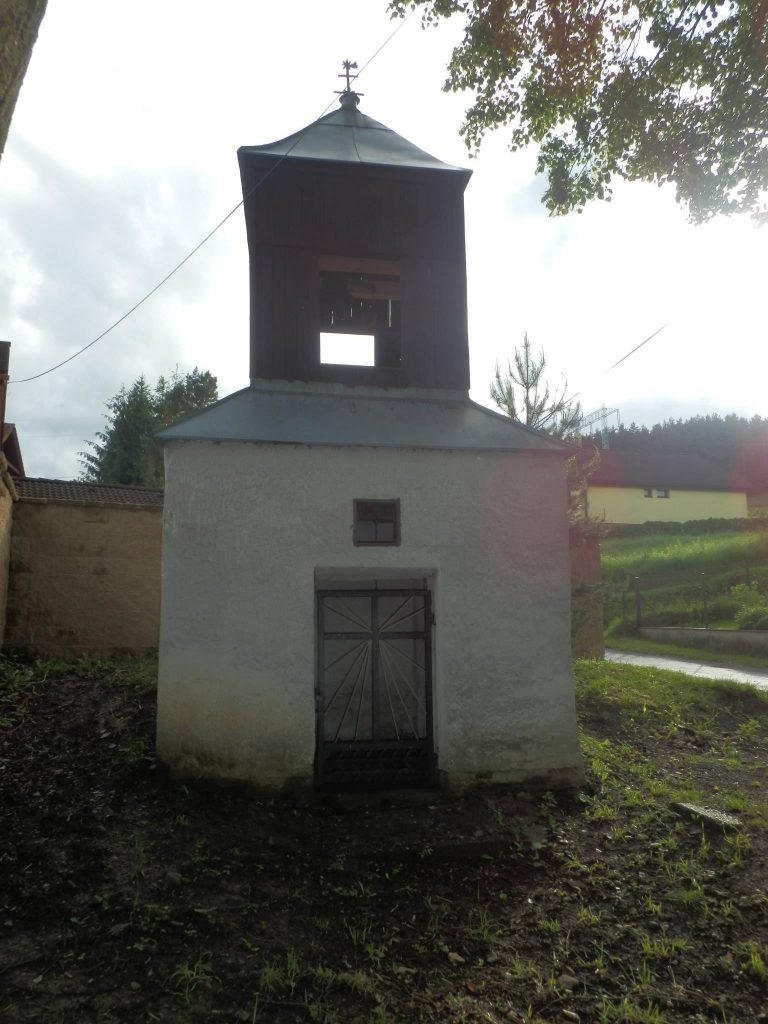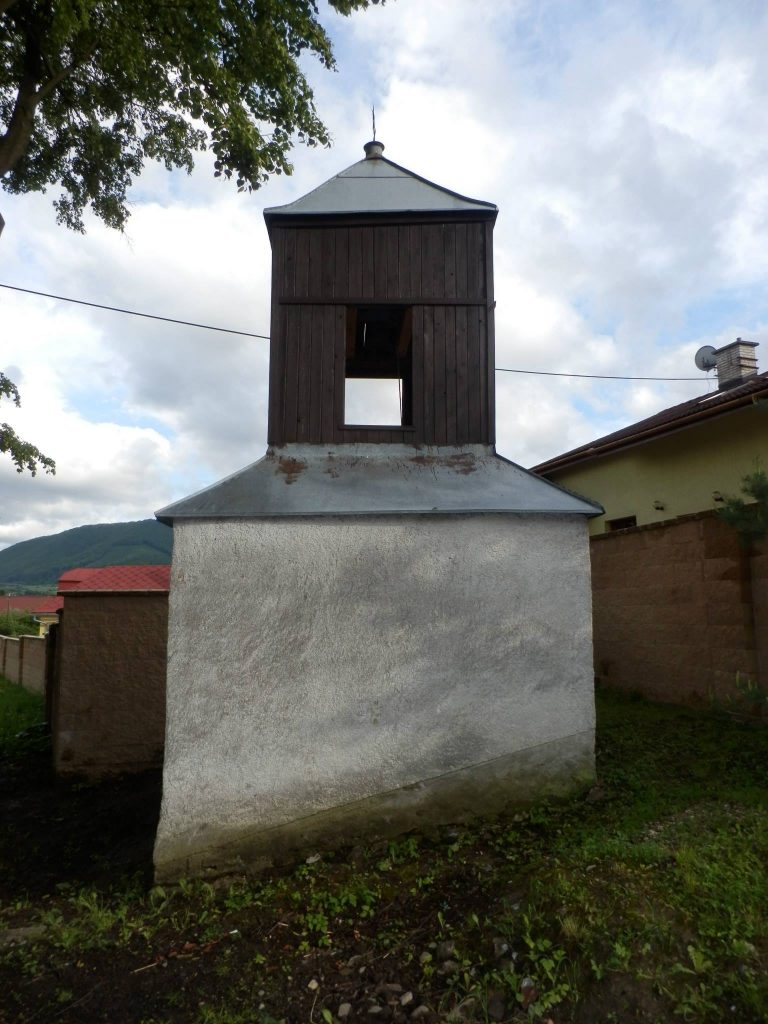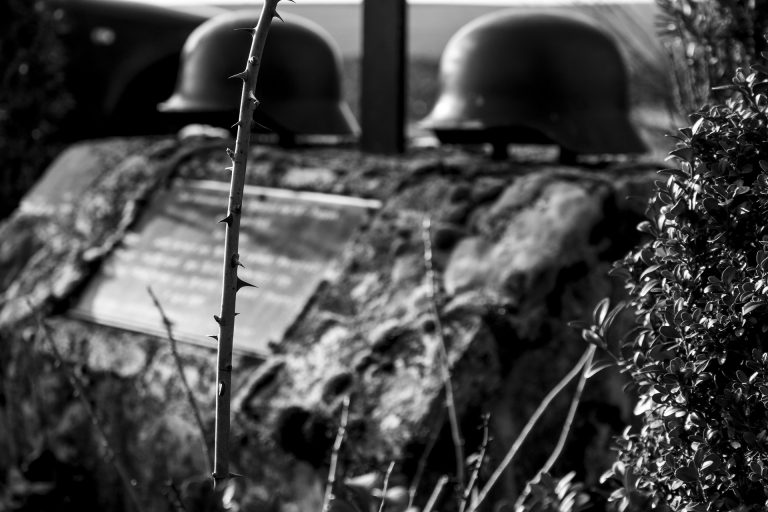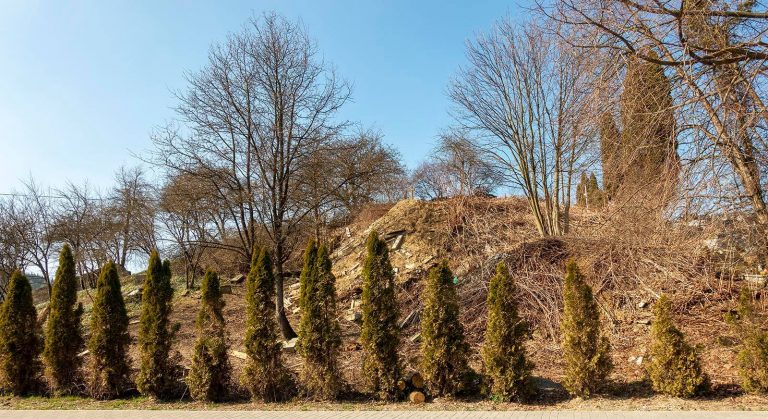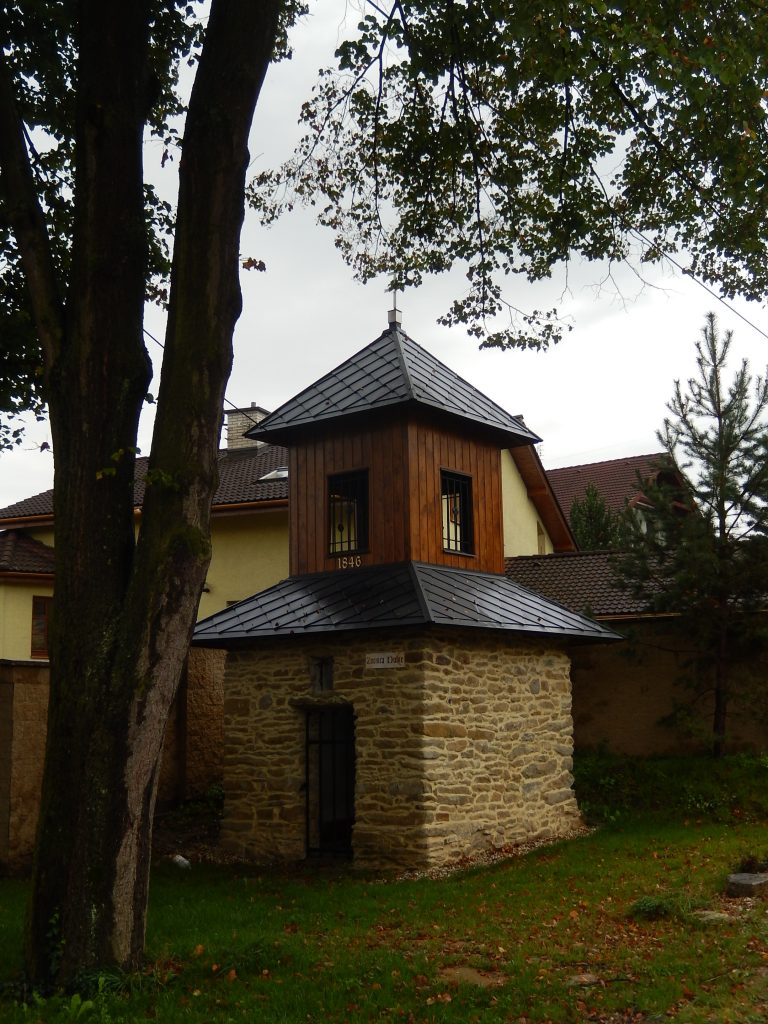
The oldest and most valuable architectural object in Dubie is the bell tower. It contains a piece of the past and the work of the ancestors of the Dubie inhabitants. It is located in Kamenec under two large linden trees. The bell towers had an announcing function during fires and natural disasters and are still used today for funerals and church holidays. We assume its origin before 1786, when in the Korabinský work „Geographisch-historische und produkten Lexikon von Ungarn“, after the description of the village of Dubie, there is a pictogram indicating the catholic church. The possibility of a church standing in Dubie can be boldly ruled out, so the mentioned symbol probably refers to a smaller sacral object, such as a chapel or a bell tower. The existence of the chapel in the mentioned period in the village is not substantiated, therefore it is appropriate to assume that it is just a bell tower. It is a simple combined half brick bell tower with a square floor plan and dimensions 275 x 276 cm. The lower part is made of stone, the thickness of the load-bearing masonry is 50 cm. The height of the bell tower is 651 cm. The turret is wooden and contains a 52 kg bell for manual ringing. The bell itself hangs on an oak head, fastened with fittings. The crown of the bell with six undecorated rectangular profile ribs comes from a two stage bell cap, concavely sloping into the mantle. In the upper part of the casing under the cap there are two continuous plastic lines, between which is the inscription FUSA TYRNAWIAE. (cast in Trnava). In the middle of the bell shell there is a relief with the crucifixion of Jesus Christ under the mentioned inscription and on the opposite side a four-line inscription UTRATAMY OSADY DUBJE – ZA RICHTARSTWA – JOSEPHA BAJANEK – 1846. In the lower part of the mantle there is a continuous ornamental relief strip with plants.
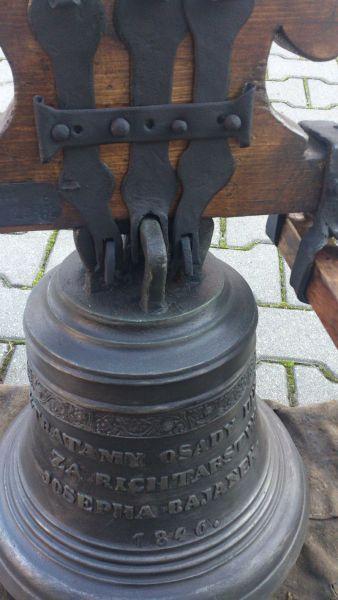
The mantle passes into the bell rim through four continuous plastic lines and the rim itself is finished with a smooth rim. The heart of the bell is a classic with an anchor-shaped ending, fastened with a leather strap. In the past, several citizens performed the function of bell ringer. We can no longer find out the names of most of them, but Stanislav Kopas, Ambróz Smoleň, Šimon Poliak, Uhrík and Jozefa Uhríková have been preserved in the memories of the living inhabitants. She used to ring 2 times a day per more than a half of the century. After the death of the bell ringer Jozefa, the evening ringing disappeared. At present, the bell ringer is Štefan Korista. During the penultimate repair in the second half of the 20th century, an external façade was applied to the bell tower, which destroyed its historic appearance.
In 2013, a complete reconstruction of the bell tower was carried out. It took place thanks to a successful project in the Chance for Your Region 2013 program. The intention of the reconstruction was to restore the bell tower to its historical character. Although it was functional at that time, it was uncultivated and its period character was disrupted by unprofessional intervention. The reconstruction of the bell tower in Dubie was important for the need to preserve the cultural heritage for future generations. The author of the idea of renovation is Tatiana Jánošková. In the project „Bell Tower“, local inhabitants supported her: husband Ľubomír Janoška, Ľubica and Jozef Šusteks, Štefan Korista and Peter Michný. In their free time, they worked the most as a volunteers. Almost all the addressed citizens or organizations took part in the reconstruction works. In addition to highly professional activities, most of the work was done by the inhabitants of Dubie on their own without wage. The condition of the roof turned out to be worse than originally expected, which resulted in a change in the project budget and its co-financing from other sources. The city of Kysucké Nové Mesto and the Parish Office of St. Jakub. The reconstruction lasted 5 months and all layers of plaster and paint were removed from the masonry perimeter of the bell tower, while the sandstone masonry was exposed, which was treated, cleaned and left without plaster. Brisolite was used for the internal plaster, the concrete components were removed and a stone floor was laid.
All wooden components have been replaced. Spruce wood was used for the truss of the mantle and turret and its perimeter beams, as well as the finished formwork of the turret. The trusses were covered with anthracite-colored aluminum sheet. A new double cross with shorter upper arms and a stainless steel comet was placed on top of the turret. The windows and the entrance were fitted with grids welded from black forged strip. In the same color is also a wrought iron cross placed in a small window above the entrance. Next to the entrance is a replica of an oak seal made of burnt clay. The bell itself was comprehensively restored. The company BOROKO from Brodek u Přerova from the Czech Republic took on this role. On October 28, 2013, the bell tower in the presence of the mayor Ing. Ján Hartel solemnly blessed by the pastor ThLic. Peter Holbičko.
Text: Mário Janík & collective
Translation: Matúš Maljar

